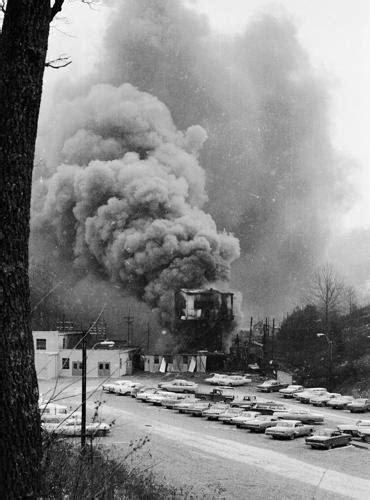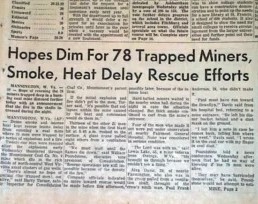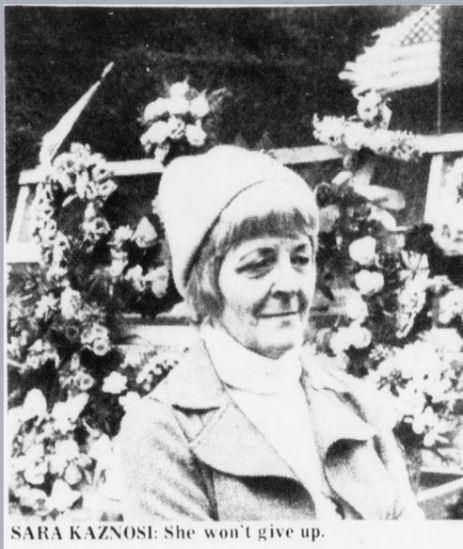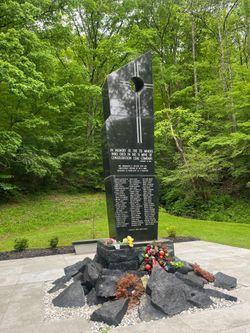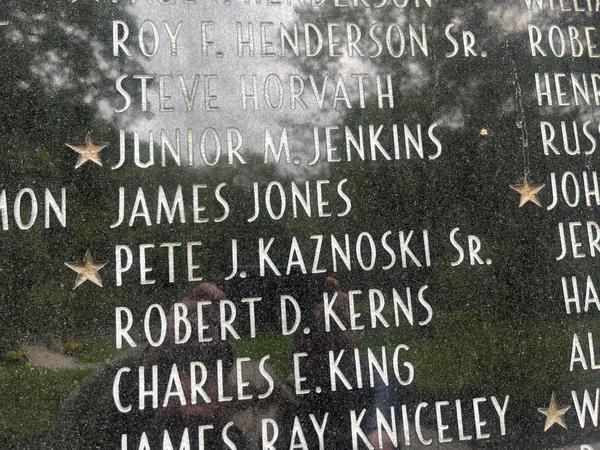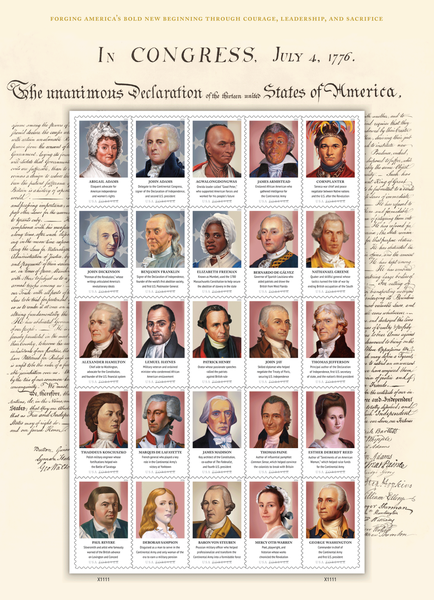November 14, 2025 Hello , Every safety rule and regulation is written in blood say labor historians. One newspaper headline acknowledged this cause and affect when Congress passed the Federal Coal Mine Health and Safety Act: '68 Tragedy at Coal Mine Spurred '69 Safety Act. In truth, a
small group of West Virginia widows should be given credit for the law. Their husbands had been killed November 20, 1968, by an explosion at the Mountaineer Coal Company's No. 9 mine. The women knew the disaster could have been prevented. Their husband's could have come home to breakfast after the cat-eye shift, if only routine safety measures had been taken. The widows took their anger to Washington D.C. and testified before the Senate subcommittee on labor, pleading their loved ones not have died in vain. This incredible story is coming up next! But as you read, please consider how Congress' recent "Big Beautiful Bill"
axes 8% of the budget for the Occupational Safety and Hazard Administration. Eight percent might seem small. But the most significant reduction in absolute terms will slash $23.7 million from OSHA’s enforcement programs, including at least 200 employees. No doubt workplace safety inspections will be reduced. Now, back to the widows
and orphans...
Coal Mine Health & Safety Act Written in Blood
Sara Lee Kaznoski kissed her husband Pete goodbye as he left for his midnight cat-eye shift at the Farmington, W.V., No. 9 mine. Pete had told Sara he worried about conditions in the mine, the heat, dust, poor ventilation and gas—a mix just waiting to explode. But it had been like that for months and so far he'd been safe. Pete had started working in the mine at fourteen. Sara's father and grandfather had been coal miners, as were her two sisters' husbands. The whole community depended on the mines for their
livelihood. The work kept the children fed. The next morning, as usual, Sara set the table and cooked a big breakfast for Pete. He'd be hungry when he came home. While she waited for him, she turned on the TV news. All the local and national channels reported a mine had exploded. The No. 9 mine in West Virginia. The mine where Pete had gone
to work last night.
Llewellyn shaft of the Consol No 9 mine November 20, 1968.
Photo by Bob Campion. The monstrous explosion struck the mine at 5:30 that morning, shaking the ground 12 miles away. Smoke and flames surged 150 feet into the
air and it was likely noxious gases filled the mine's 100 miles of tunnels as far as 300 feet underground. Three smaller explosions followed throughout the day. The day
before, two crews had been forced to quit work due to a build-up of methane gas.Only hours prior to the explosion, the same thing happened to a crew in another section of the mine. It was common knowledge mine management prioritized speedy production over miners' safety. High levels of coal dust and methane gas were routine and testing for the poison gas inadequate. Ninety-nine men had gone to work in the No. 9 that night. Rescue crews geared up, the men eager to save the lives of their fellow workers.
Gary Martin (left) and Bud Hillbery (right) and an unidentified man are hoisted from the Farmington No.
9 mine. They were the last man to escape the disaster alive, photo Bob Campion. As Sara and the other stricken families waited, a crane hoisted groups of
miners from underground to safety. That day 21 miners were pulled from danger. Another 78 remained unaccounted for. Communication into the mine had broken down by
the blast and William Poundstone, the company's executive vice president for operations, said there was no way of knowing if the miners inside were alive. He told the press later that day that further rescue operations were impossible because of the density of the fire.
The pregnant wife of a trapped coal miner waits for news in the company store near the No. 9 mine, photo by Bob Campion.
A boy in Farmington at the time, 10-year-old Michael Aloi said, “Everyone had hope because that’s all you had.” At school in the days
following the explosion, he said at least one student in every classroom had a relative missing. Twenty more major blasts and many more small ones rocked the mine over
the next week. Fires continue to burn underground. nine days later, with the fires still burning, rescuers pulled back "The coal
company wanted to seal the mine," Walter Slovekosky one of the surviving workers said. "They knew the situation was hopeless. But the widows kept screaming, `You can't seal it. You can't seal it.' "
By November 28, eight days after the first explosion, air holes drilled into the mine showed no one could survive down there. Two days later, the company
decided to starve the fire of oxygen by pouring concrete into the shafts. That sealed the mine with the bodies of 78 miners still inside. The families gathered at a
church to hear the news. Jim Matish was fourteen, he'd never see his father again. "There was never such wailing and crying and screaming. It's just hard to imagine." Sara Kaznoski turned her grief and anger into action and with other widows formed the Widows Mine Disaster Committee. They had three major goals, force the government to hold the coal company responsible for the deaths, recover the bodies of the miners and pass legislation to protect miners from dangerous conditions in the future. In early 1969, when the Senate labor subcommittee held hearings on reforming the nation's coal mine health and safety laws, members of the Widows Mine Disaster group went to Washington D.C. The women from rural West Virginia sat at a long table in the glare of television spotlights and steeled themselves. They told the story of how much they'd lost and how the mining company was to blame, delivered a moving plea to the senators for
help. Frequently dabbing tears away with a handkerchief, Sara told them: "Today it is 4 months since this tragedy. 78 men are still entombed in the
Farmington mine. If anyone had acted for these men they would still be here today. The day before her husband died, he told Sara, "There is too much carelessness in the mine, too much apathy." Why," she asked, "are you people so reluctant in debating what you should do about humanity. There is so much that all of you can
do." Congress listened, passing the Federal Coal Mine Health and Safety Act in December 1969, which established nationwide mine safety regulations.
President Nixon initially threatened to veto it citing concerns over the cost of black lung compensation. The Farmington Widows Mine Disaster Committee responded
by organizing wildcat strikes by miners across the nation that would hit the nation’s heating fuels in the midst of winter. Nixon signed the bill. For the first
time, the federal government could fine companies for safety violations and even bring criminal charges against the worst offenders. But that type of justice never came for the Farmington widows.
Desert Sun, 2 April 1974.
Evidence later surfaced that an alarm on a vital ventilation fan in the No. 9 mine, which would have triggered an evacuation of all 99 miners, was disabled prior to the explosion. A
federal investigator's memo about this was suppressed by a Bureau of Mines manager. The memo could have helped families pursue accountability, but most accepted a $10,000 settlement instead. Ongoing legal actions suggest culpability clearly lies with the coal company, though many involved officials are now deceased and the original memo's details were omitted from the federal government's eventual report. Jim Matish, who is now a West Virginia judge, says someone should have been held accountable.
"In my opinion, it amounted to a criminal act," Matish said.
The coal company unsealed the No. 9 mine nearly a year after the explosion, in September 1969, to try to recover the dead and mining coal in the process. Recovery efforts were slow; ten years later, 59 victims' remains had been returned, but after Consolidation Coal spent nearly 10 years and $11 million, the search was abandoned in April 1978. Nineteen bodies were never recovered, including Pete's Kaznoski's. The company built a memorial as part of an agreement with the miners'
widows after years of legal battles.
Find a Grave photo by Anthony Galante.
Find a Grave photo by Anthony Galante. Sara kept fighting for miners even after winning the fight for health and safety
legislation. The United Mine Workers of America had not been fully supportive of the Farmington widows during the long battle to recover their husbands' bodies. UMWA President Tony Boyle had even praised the coal company after the explosion. Sara got involved in the internal struggle to clean-up the union's corrupt leadership,
supporting Jock Yablonski to replace Boyle, which brought her into Boyle's line of fire. Though she received death threats for her activism, it was Yablonski who was ultimately assassinated at the hands of Tony Boyle and his supporters. They called Boyle "tough Tony," but he in 1974 he was convicted of murder-for-hire conspirator in Joseph A. Yablonski, his wife Margaret, and their
daughter Charlotte. Sara Lee Kaznoski, on the other hand, left a legacy of better health and safety for workers written in the blood of her husband. It's up to us to preserve it.
Like my article today? Forward this email to share with family and friends.
Sources The Courier-Journal, Louisville KY, Fri, Mar 21, 1969 ·Page 27 The Daily Notes, Canonsburg, PA, Fri, Mar 21, 1969 ·Page 8
Thanks to Peggy Hartzell for the tip off Esther is going to be honored on a US stamp!
She's second row from the bottom on the far right next to Thomas Paine, who is said to have helped her write Sentiments of an American Woman a broadside she published anonymously in 1780, declaring colonial women were equal to men in their
patriotism.
Follow me on social media
This newsletter is a reader-supported publication. To support my work, consider becoming a paid subscriber.
Read
a great book? Have a burning question? Let me know. If you know someone who might enjoy my newsletter or books, please forward this e-mail. I will never spam you or sell your email address, you can unsubscribe anytime at the link below. To find out more about my books, how I help students, teachers, librarians and writers visit my website at www.MaryCronkFarrell.com. Contact me at MaryCronkFarrell@gmail.com. Click here to subscribe to this newsletter. |
|
|

